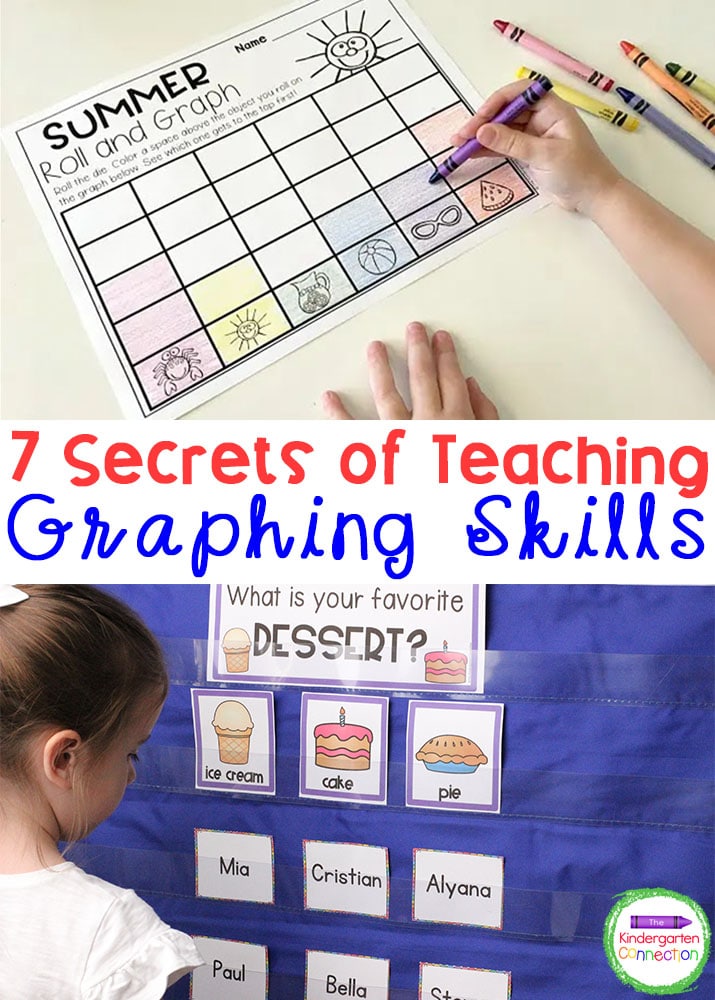Do your students build towers in the block center or line up silverware in the kitchen area of your classroom? Do they group like colored markers on a mat when coloring or raise their hands to vote? Then they are demonstrating early graphing skills. Here are some important little-known secrets about teaching graphing skills!
*Grab our Graphing and Measurement Activities for Pre-K & Kindergarten for tons of hands-on, easy-prep learning fun!

Teaching math is an enormous task, and with the new changes in adopted state standards, the bar for teachers has risen even higher. That’s because there is a lot that goes into teaching math. It’s comprehensive and systematic.
Mathematicians indicate there are five primary disciplines of math that should be taught, which are as follows:
Exclude one of those components and children experience unnecessary difficulty in learning math.
This is the final installment of our series on the five disciplines of math.
First off, the final discipline of math includes much more than just graphing. Graphing falls under the “data analysis and probability” discipline of math. It includes estimation and all forms of organizing and recording mathematical information.
Data analysis and probability include these skills:
As do all the other strands of mathematics, the study of graphs provides a foundation for more advanced data analysis concepts that will be explored and learned in the later years.
Children who have adequate data analysis skills also tend to be better at:
This is not to say that these skills cannot be developed by other methods, especially within math, but rather to say that in elementary school, learning about graphing, estimating, and basic probability certainly helps develop those skills.
The ability to read a graph doesn’t come naturally to all students, but like many concepts in math, needs to be taught in authentic instruction. Organizing and recording data, such as that in a graph, is entirely dependent on a child’s sorting skills (algebra strand).
If a child is struggling to understand graphing, try these simple teaching tips:
Graphing and other data analysis skills are developed much earlier than teachers might think. As children interact with their environment, as early as preschool, they are receiving information in raw data form, and naturally analyze it with their senses. At this stage in development, children organize data purely for enjoyment or stimulation, rather than utility. (Think of a preschooler or kindergartener lining up sets of cars in the block center, or maybe even grouping them by colors.)
As young children grow, their opinions develop more fully and they become more interested in their peers’ assessments of ideas. They enjoy voting, and graphing is a natural way to record votes. Many classes begin their learning with a question of the day, some as simple as, “Will you have hot lunch today?” or “Which animal is your favorite?” or even, “Do you think it will rain today?”
For success in teaching graphing and other data analysis skills, try some of these tips:
*Guest post by Sarah from Stay at Home Educator
Your planning will be so much easier with instant access to:
Be sure to request an invitation so that you don’t miss your chance to be part of the best early childhood club around!
